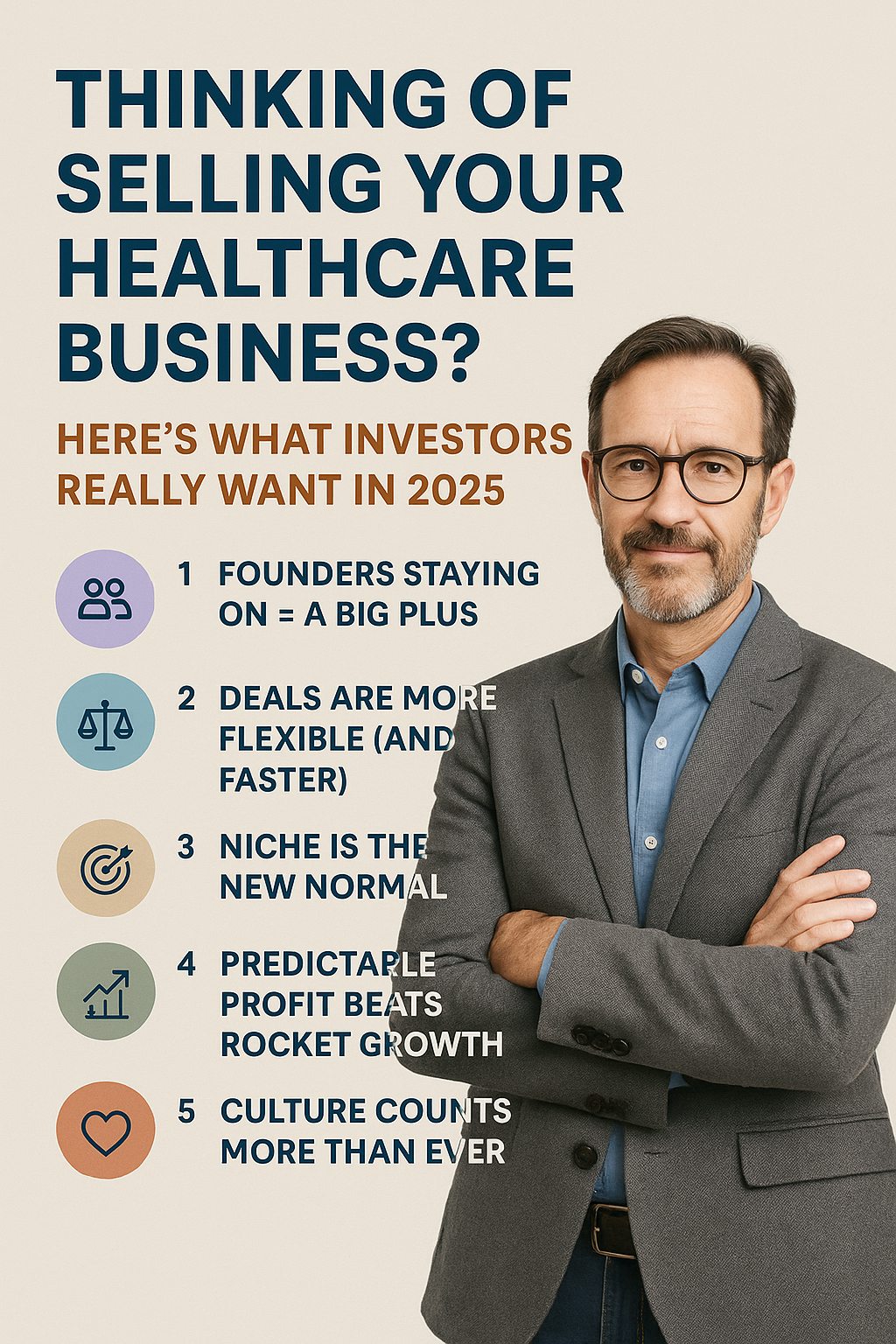What acquirers looked for in 2020 isn’t what they want now. If you’re preparing for an exit or seeking growth capital in 2025, here’s how the game has changed – and how to win it.
From Exit to Partnership: The Founder Role Has Changed
Then (2020–2021): Investors were open to full buyouts and founder transitions. As long as performance metrics looked strong, acquirers were willing to replace leadership post-close.
Now (2024–2025): Most firms are no longer just buyers—they’re partners. They want founders to stay on, help with growth, and protect the company culture. Investors like Cothrom Capital and Avid Health at Home make it clear: your continued involvement is a key part of the deal.
What it means for you: If you’re looking to step away completely, you may have fewer options or need to be more flexible. But if you’re open to staying and scaling with a financial backer, your appeal goes up dramatically.
Structure Matters: Simplicity, Speed, and Custom Fit
Then: Acquirers often favored structured buyouts or control-heavy transactions. Many relied on broad auction processes or traditional private equity timelines.
Now: The preferred approach is often founder-friendly and non-disruptive. Groups like Montera and Cothrom emphasize streamlined due diligence, flexible terms, and minimal interruption to your team.
What it means for you: Be ready to discuss how you envision your role post-close. The clearer your goals, the easier it is to find a buyer who can structure around them.
Sector Focus Has Evolved: Niche is the New Broad
Then: Healthcare services, HCIT, and diagnostics were hot – but investors cast a wide net.
Now: Acquirers want precision:
- Gauge Capital is targeting behavioral health EHRs and urology roll-ups
- Cothrom seeks med waste, IVD tools, and device servicing firms
What it means for you: Position your business within a specific niche and be able to articulate what makes your market and model unique.
Recurring Revenue and Margins Are in the Spotlight
Then: Growth-at-all-costs was a popular mantra. Topline expansion often outweighed margin performance.
Now: Predictability is king. Acquirers today want:
- 10%+ EBITDA margins
- Recurring or reoccurring revenue streams
- Low customer concentration
What it means for you: Be prepared to show clean financials, sticky customer relationships, and dependable cash flow. It’s less about size and more about quality of earnings.
Culture and Continuity Are Dealmakers
Then: Operational overhaul post-close was common. Investors had playbooks for plugging in new leadership and systems.
Now: Buyers want to preserve what works. Culture continuity, team stability, and founder vision are critical components.
What it means for you: Highlight your team’s loyalty, your internal culture, and how you lead. These intangibles are often the deciding factor.
Final Thoughts
If you’re a healthcare founder thinking about your next chapter, today’s market favors clarity, collaboration, and continuity. Gone are the days when financial performance alone could seal the deal. The new wave of acquirers wants strong businesses and strong partners.
By aligning your expectations with current investor trends, you can position your company not just for sale – but for sustainable, strategic growth with the right backer by your side.

